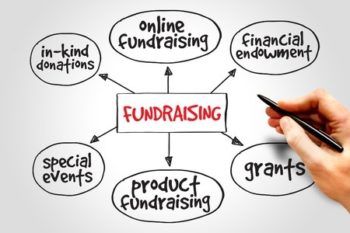The Function of Community Engagement in Nonprofit Fundraising: Structure Lasting Relationships for Lasting Support
Neighborhood interaction is increasingly recognized as an important element of successful nonprofit fundraising. By promoting authentic connections with regional stakeholders, companies can cultivate depend on and commitment, which are essential for sustainable assistance. Nevertheless, the methods and techniques used to engage neighborhoods vary extensively, increasing crucial concerns concerning efficiency and impact. What are the most effective techniques for growing these important links, and how can nonprofits determine their success in this field? Recognizing these dynamics can dramatically affect the future of fundraising initiatives and the total goal of nonprofit organizations.
Understanding Area Involvement
Neighborhood interaction is a crucial component of successful not-for-profit fundraising efforts. Nonprofits have to identify essential stakeholders-- such as area participants, local companies, and other companies-- to create reliable involvement methods.
Efficient area interaction is predicated on energetic listening and responsiveness to the needs and interests of the area. This procedure entails getting responses, recognizing community dynamics, and guaranteeing that the organization's goal straightens with neighborhood priorities. Engaging the area can take different forms, including public conferences, volunteer opportunities, and partnership efforts, each developed to urge involvement and financial investment in the organization's goals.
Additionally, area interaction ought to be come close to as a continuous discussion rather than an one-time effort. By promoting a comprehensive environment where community voices are heard and valued, nonprofits can construct a strong structure for future fundraising endeavors. Inevitably, a deep understanding of area involvement equips organizations to create authentic links that improve their overall effectiveness and sustainability.
Benefits of Solid Relationships
Solid relationships formed through neighborhood involvement return numerous benefits for nonprofit fundraising initiatives. Firstly, these relationships foster depend on and integrity, essential elements in encouraging contributors to contribute. When prospective advocates see a not-for-profit actively included in their area, they are most likely to think in its objective and influence.

Moreover, these relationships help with effective interaction. Nonprofits can utilize their connections to share stories of influence, updates, and requires, making certain that advocates stay informed and involved. This open line of interaction not just reinforces bonds but additionally encourages referral promo, expanding the not-for-profit's reach.
Finally, solid community connections can attract brand-new partners and sponsors. People and organizations are much more likely to line up with organizations that show significant neighborhood involvement, supplying added resources and support that can dramatically boost fundraising capacities. Hence, cultivating durable connections via neighborhood engagement is indispensable to a nonprofit's lasting fundraising success.
Methods for Reliable Involvement
Just how can nonprofits effectively involve their communities to boost fundraising efforts? Developing targeted strategies is important for fostering significant links. Initially, leveraging social networks platforms allows companies to share their objective dynamically and interactively, reaching a more comprehensive target market. Routine updates, engaging content, and calls-to-action can galvanize community passion and engagement.
Second, organizing area events, such as workshops, volunteer opportunities, or fundraising drives, facilitates in person interaction, allowing nonprofits to display their effect and efforts. These occasions not only elevate funds however also grow connections and allow area participants to engage directly with the cause.
Third, carrying out tailored communication strategies can enhance interaction. Customizing messages to specific donor segments based upon passions and past payments fosters a sense of belonging and financial investment in the company's goal.
Finally, producing collaborations with regional businesses and neighborhood leaders can amplify outreach efforts. Joint initiatives can boost visibility and trustworthiness, showing a cumulative commitment to the community's well-being. find out here now By integrating these techniques, nonprofits can develop long lasting connections that enhance fundraising initiatives and drive lasting assistance.
Determining Engagement Success
While engaging the area is crucial for effective published here not-for-profit fundraising, gauging the performance of these engagement initiatives is similarly important. Establishing clear metrics permits organizations to analyze exactly how well they are connecting with their audience and accomplishing their fundraising objectives. Trick efficiency indications (KPIs) such as donor retention rates, volunteer participation levels, and interaction on social media sites systems offer concrete information for evaluation.

Regularly evaluating these metrics enables companies to pivot their techniques when necessary, guaranteeing that area interaction remains lined up with their overall goal. Moreover, sharing these results with stakeholders cultivates transparency and builds trust, encouraging more community participation. Eventually, a durable measurement structure not only educates future fundraising campaigns yet also reinforces the relationship in between the not-for-profit and its fans, laying the groundwork for lasting success.
Study in Community Influence
Numerous situation studies show the extensive effect that area involvement can have on nonprofit fundraising success. One remarkable example is the "Something to chew on" campaign, where a neighborhood food bank partnered with organizations and institutions to host community suppers. These occasions not just increased funds yet also fostered a feeling of belonging among individuals, dramatically boosting benefactor retention prices.
One more compelling instance is the "Environment-friendly Spaces Job," which included neighborhood citizens straight from the source in the revitalization of urban parks. This effort not just garnered financial backing from regional organizations but likewise grew a volunteer base that added to recurring maintenance and shows. The sense of possession and satisfaction among neighborhood participants converted into sustained payments.
In the world of arts, the "Art for All" campaign efficiently involved neighborhood artists and customers to develop collective art installments, causing increased exposure and contributions for a neighborhood arts not-for-profit.
These instances highlight that when nonprofits focus on neighborhood participation, they can create enduring relationships that boost fundraising efforts, making sure sustainable support and promoting a vibrant neighborhood society. Such cases show that area interaction is not merely a strategy however a vital pillar of nonprofit success.
Final Thought
In verdict, community interaction is essential to the success of not-for-profit fundraising initiatives. Inevitably, a robust structure of neighborhood support not just amplifies fundraising prospective yet likewise cultivates a culture of partnership, crucial for attaining long-term organizational objectives and maintaining meaningful effect. fundraising consultant.
Nonprofits must recognize essential stakeholders-- such as area participants, local services, and other companies-- to create reliable engagement strategies.

In final thought, area interaction is essential to the success of not-for-profit fundraising initiatives.
Comments on “Leading Nonprofit Fundraising Ideas: Cutting-edge Strategies to Elevate Even More Funds”